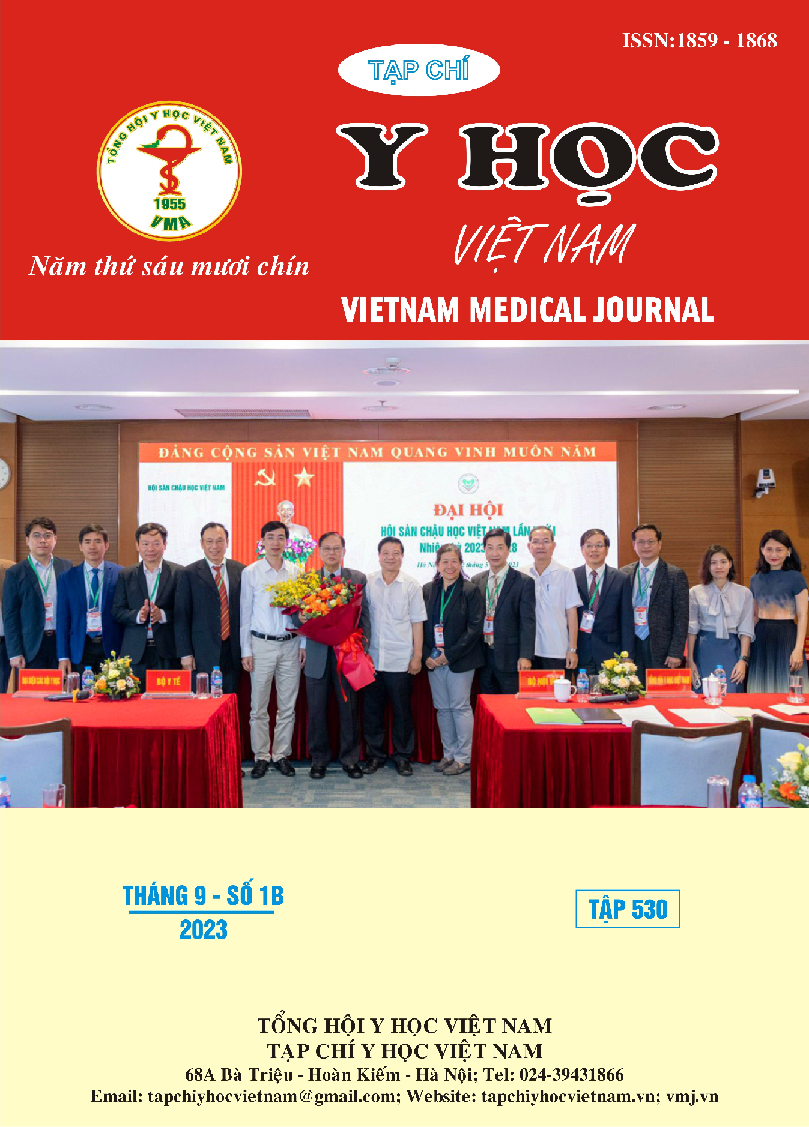HE RATE OF METABOLIC SYNDROME AND SOME RELATED FACTORS IN HEALTH MANAGEMENT OFFICIALS IN CA MAU PROVINCE
Main Article Content
Abstract
Background: The aim of this study is to examine the characteristics of metabolic syndrome in officials in order to prevent related diseases. Based on the findings, we will propose appropriate and effective solutions for the care and protection of officials’ health. Objectives: This study aims to determine the rate and characteristics of metabolic syndrome and to survey related factors among health management officials in Ca Mau province during 2022-2023. Materials and Methods: Cross-sectional description and non-control group intervention on 370 health management officers at the Ca Mau Provincial Party Committee’s Health Protection and Care Board. Results: the rate of metabolic syndrome is 79.5%, of which the rate of abdominal obesity is 57.3%, increased Triglycerides is 63.2%, decreased HDL-Cholesterol is 71.1%, the rate of hypertension is 75.7%, the rate of fasting hyperglycemia is 83.2%. The prevalence of metabolic syndrome is related to the family having a family member with diabetes, family history of high blood pressure, a family with dyslipidemia, daily work characteristics, smoking habits, etc. the habit of eating fried food. Conclusion: The prevalence of metabolic syndrome was 79.5%, and it was associated with a family history of diabetes, hypertension, dyslipidemia, specific daily job characteristics, smoking habits, and fried food consumption among the study subjects.
Article Details
Keywords
metabolic syndrome, fat belly, diabetes, dyslipidemia.
References
2. Bùi Văn Chín (2019), Nghiên cứu tình hình hội chứng chuyển hóa, yếu tố liên quan và kết quả kiểm soát huyết áp bằng Telmisartan ở bệnh nhân tăng huyết áp nguyên phát tại Bệnh viện Đa khoa Trung ương Cần Thơ, Luận văn chuyên khoa cấp II, Trường Đại học Y Dược Cần Thơ.
3. Dương Ân Hận (2013), Nghiên cứu tình hình hội chứng chuyển hóa ở người trên 40 tuổi đến khám tại khoa khám bệnh Bệnh viện đa khoa Đồng Tháp, Luận văn chuyên khoa cấp II, Trường Đại học Y Dược Cần Thơ.
4. Nguyễn Thái Bảo (2021), Nghiên cứu tình hình và đánh giá kết quả can thiệp hội chứng chuyển hóa ở cán bộ thuộc diện quản lý sức khỏe tỉnh An Giang năm 2020 – 2021, Luận văn chuyên khoa cấp II, Trường Đại học Y Dược Cần Thơ.
5. Hội tim mạch học Việt Nam (2010), Các yếu tố nguy cơ thường gặp của bệnh tim mạch, Nhà xuất bản y học, chi nhánh Thành phố Hồ Chí Minh.
6. Nguyễn Thy Khuê (2007), Hội chứng chuyển hóa, Nội tiết học đại cương tập 2, NXB Y học, tr 503-508.
7. Bộ Y Tế (2017), “Bệnh béo phì”, Hướng dẫn chẩn đoán và điều trị bệnh nội tiết – chuyển hóa, nhà xuất bản Y học, Hà Nội, tr. 247.
8. Bộ Y Tế (2018), Hướng dẫn chẩn đoán và điều trị bệnh tăng huyết áp, hướng dẫn chẩn đoán và điều trị bệnh tim mạch, Nhà xuất bản Y học, Hà Nội, tr. 224 – 230.
9. Robert H Eckel and Marc-Andre Cornier (2014), “Update on the NCEP ATP-III emerging cardiometabolic risk factors”, Eckel and Cornier BMC Medicine 2014, 12:115.


